Seoul, South Korea: Secluded shaman sites in midst of millions
September 3, 2011 Markus Seppälä
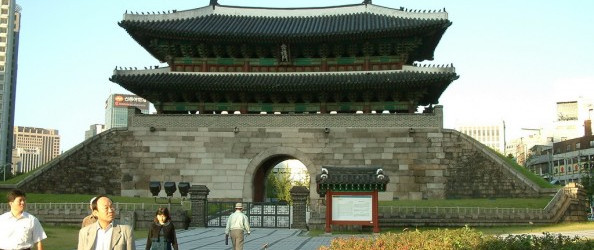
Tank traps and landmines in the morning, meditation on a hilltop in the evening, and shopping at midnight. Seoul is a genuine, often overlooked Asian supercity and easily worth two weeks’ stay.
World’s second largest city, always open
Seoul is a true megacity, home to over 20 million people. By metropolitan population, the capital of South Korea is second only to Tokyo. And Seoul definitely has that big city feel. Unlike Los Angeles, for example, which is more spread out, Seoul is quite dense. And unlike places like Delhi, even the outer parts are well developed. Perhaps this photo will give you the best idea of the size. There are huge, high-rise buildings literally as far as the eye can see from atop the Namsan Mountain.
Huge cities in general bring lots of advantages. One of them is that they’re open 24 hours a day, and Seoul is no exception. However, here it applies to more than fast food joints, gas stations, and Apple Stores. For example, some parts of the sprawling street markets never close. And there are 24-hour shopping malls and department stores scattered throughout the city.
Planet’s best subway?
One of my favorite things about Seoul is the subway system, which is efficient, clean and safe beyond belief. And it’s so well-organized. Everything is logically numbered: lines have numbers, platforms have numbers, exits have numbers, which is a great help when getting directions. Each stop also has a number indicating both the line and the station, so it should be impossible to get lost. Very helpful signs in multiple languages, including English, help you navigate the system. Even toilets, which are all clean and free and numerous, are easy to find thanks to little arrows on the walls. “Toilet 42 m” one will say and the next “Toilet 35 m”. Seoul’s subway system is the best I’ve used.
The DMZ: Visit an actual frontline!
The ongoing conflict between South Korea (Republic of Korea) and North Korea (Democratic People’s Republic of Korea) affects the day-to-day politics of South Korea. Not surprising perhaps, since the two countries are still formally at war with each other. Seoul is actually only 40 km from the border with North Korea. And what a border! It’s the most heavily militarized border in the world. Along it, there’s a 4-km-wide demilitarized zone (DMZ), filled with electric fences, tank traps, and landmines.
And of course, the DMZ is a place where you most definitely want to go. First, it’s your only easy-access way of adding North Korea to your list of countries. You see, inside the DMZ there is a sort of “security bubble” with a road crossing. Right on the border is a row of buildings. The light blue ones are under United Nations control and the others belong to North Korea. The northern half of each building is thus in North Korea and the southern half in South Korea. Once inside one of the UN houses, you basically walk around a conference room table and change countries.
Second, a visit to the DMZ is an excellent opportunity to learn about the hitherto unresolved disagreement between the countries. Now, you can’t just hop on the train to the DMZ. Luckily, the American military will be happy to take you, if you promise to behave.
The spiritual side of Seoul
The lasting impression I have from Seoul is that in the middle of this bustling megapolis with its traffic, crowds and pollution, you can still find a quiet spot. Don’t be surprised if you leave behind an office tower and find yourself at a shamanic holy site, complete with candle-lit rituals. Or find complete peace in meditation high above a roaring highway, like this woman.
Among the modern skyscrapers connected to the world’s best broadband, there’s also more history than you can deal with in two weeks. Three medieval pagoda-style gateways, formerly part of the city wall, still serve as important landmarks and the site of major markets. There are also Buddhist temples and UNESCO-protected palaces. For more modern history, I recommend visiting the former Japanese prison-turned-museum built during Japan’s brutal occupation of Korea in the first half of the 20th century. You can’t help but be moved by the prison cells too low for standing, too short for lying down.
Hot pot. Really hot
As a final word, let me leave you with this advice. Go ahead and try the many hot pot eateries, where they bring you a pot of broth heated on a gas burner under the table. You also get slices of meat and vegetables that you boil in the broth for just a minute or two. But do make sure to learn the Korean word for spicy. I didn’t. And I cried.
always open,
DMZ,
hot food,
large city,
meditation,
mountain,
Seoul,
South Korea
Asia,
Fujifilm FinePix S602 Zoom,
Subway
previous post: Gothenburg: Riverside outing
3 Comments → “Seoul, South Korea: Secluded shaman sites in midst of millions”
Trackbacks For This Post
-
‘Mr K’ shows Korea’s Cold War lingers | MaritimeSecurity.Asia -
12 years ago
[…] […]

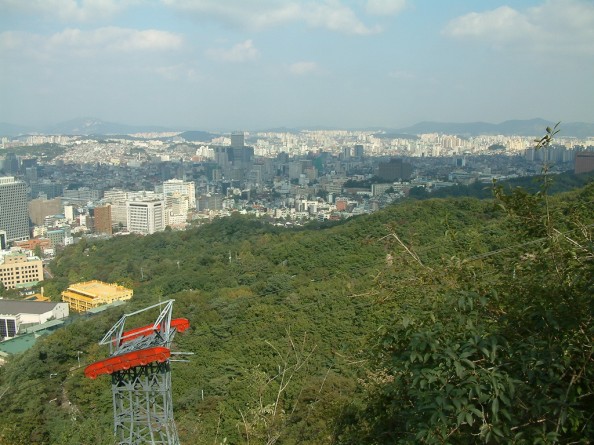
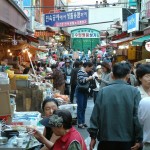
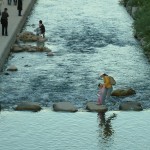
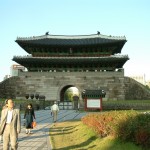
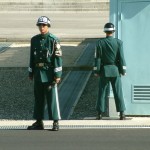
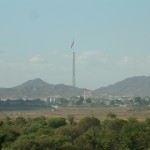
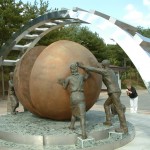
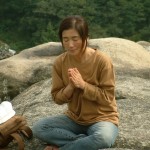
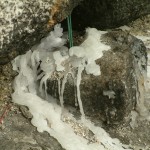
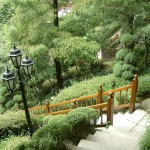
I love Seoul! But I admitted I never try to take a bus there since I have no idea about the writing character on the bus.
Fair point, Ria. But if you have the extra time, jumping on a random bus and seeing where you end up can be a lot of fun!